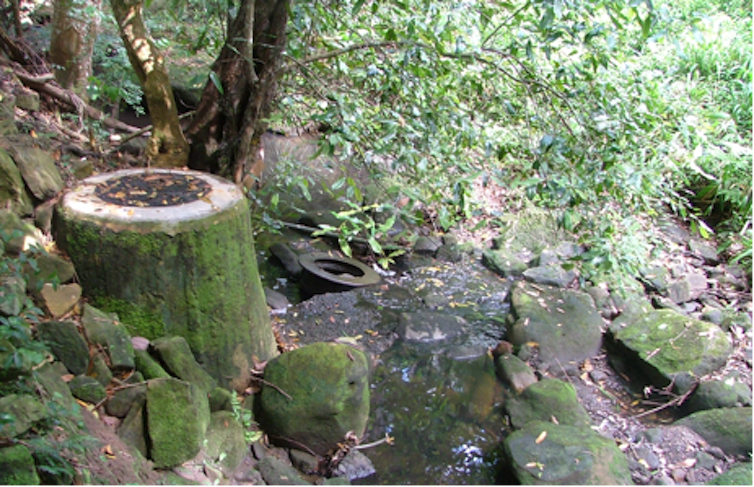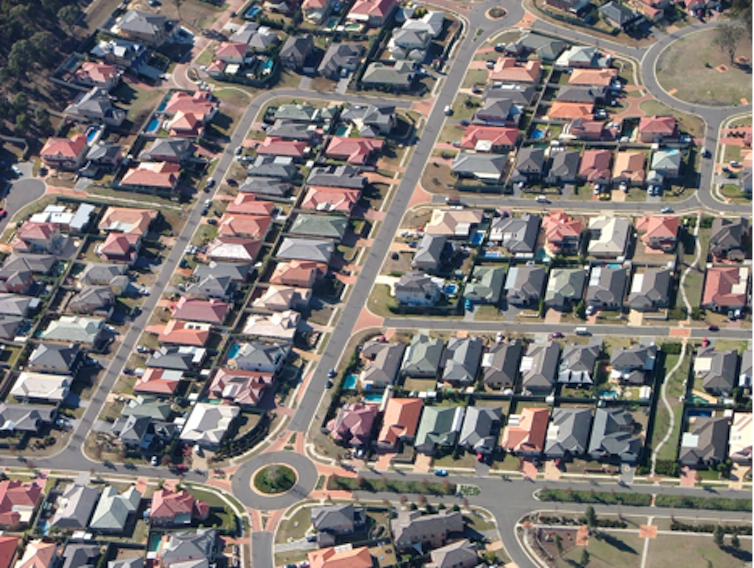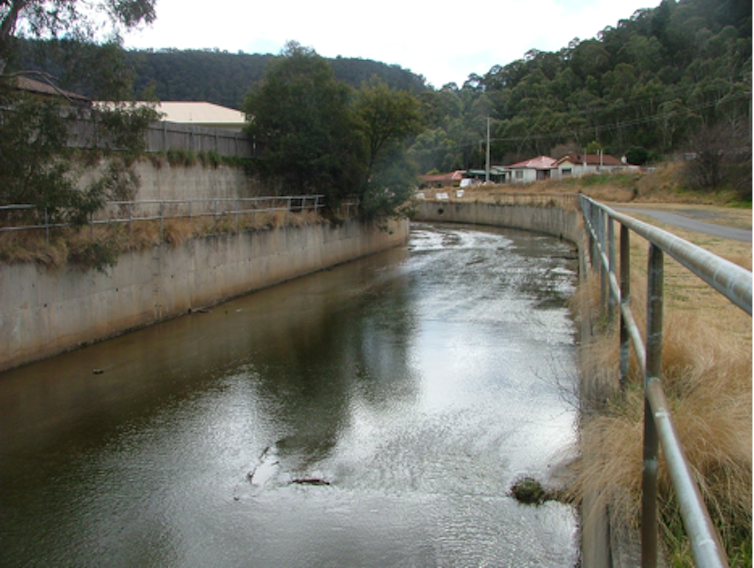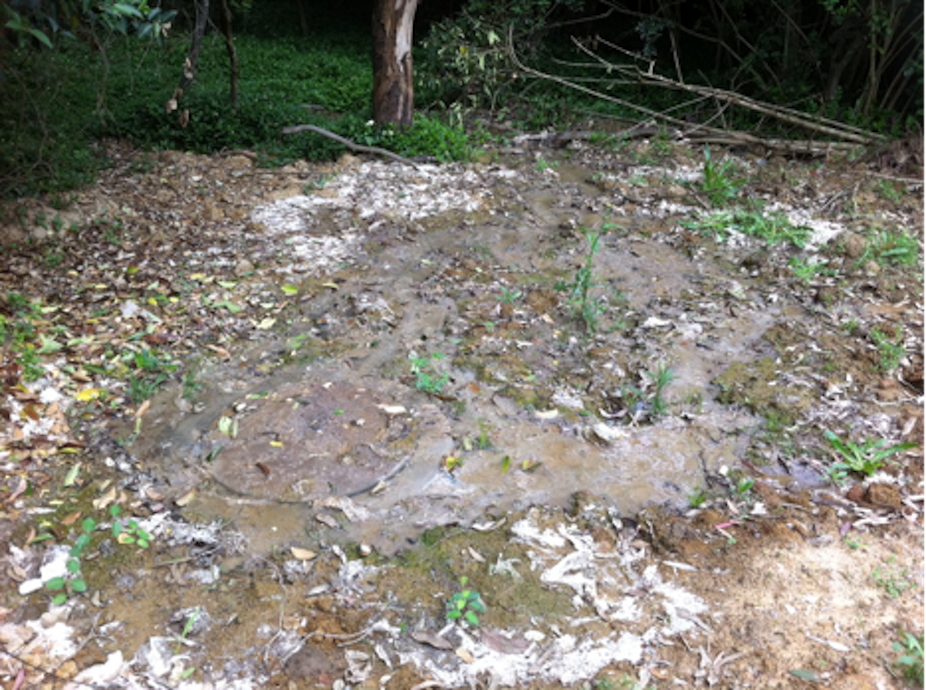Australia’s urban waterways are often polluted and sick. They suffer from a condition called the “urban stream syndrome”. A common factor that contributes is contamination from sewage.
How and why does this happen? It is because a considerable proportion of our cities’ sewage flow escapes from the vast network of thousands of kilometres of underground sewer pipes that form the sewerage system.
The steady seepage of sewage through small cracks and joints is termed “exfiltration”. This escapee sewage tends to constantly flow into soil and local streams.
Pipes can be cracked in a number of ways. Tree roots are a common source of obstruction, particularly in the garden suburbs. Roots are highly proficient at penetrating pipe joints, often through hairline cracks, to secure access to the nutrient-rich water supply.
A clump of tree roots in a sewer can “choke” it, resulting in an “overflow” from some point of the system upstream.
Urban streams and rivers are highly exposed to sewage pollution due to their proximity to sewer mains. As conventional sewerage systems flow due to gravity, the sewer mains were laid at the lowest points in the landscape, generally beside streams or rivers.

During heavy rain the volume of sewage flows rise, often to the limit of the system, and a wet weather overflow may escape into the environment. One of the causes of additional wet weather flows are illegal connections of roof downpipes or other stormwater drainage into the sewerage system.
There are designed structures where such overflows are released, but often they occur from unplanned locations such as access chambers, sometimes called “manholes”. For human health purposes the system is designed to overflow away from houses and shops. Instead, they will often overflow into the local park, or bushland, and as the sewer is often laid beside the local creek, the overflow of sewage rapidly enters the local stream.
One of the underlying causes of wet weather overflows is that the capacity of the sewerage system is inadequate for the current population it now serves. The size of sewer mains was carefully planned for a particular population size, sometimes many decades before today. The additional volumes of wastewater from population growth place greater pressure on the capacity of the sewerage system.
When a wet weather event leads to higher than normal flows in a system struggling to convey additional sewage flows, sewer overflows result. Often the system “pops” the manhole access chamber lids to release the pressure.

In extreme wet weather the overflows may look like small discoloured “fountains”, sometime popping up from streets or footpaths. Urban waterways such as Lane Cove River, in northern Sydney, are well know for being highly contaminated by sewage overflows after heavy rain.
Whether we consider sewer overflows and leakages a problem really depends on the nature of the local waterways and how they are used and valued by the community. Of greatest concern is infectious disease, such as the contamination of Wallis Lake oysters with the sewage-derived virus hepatitis in 1998. It is widely recommended that people don’t swim at urban beaches, particularly Sydney’s harbour beaches, for several days after heavy rain due to the risk of infectious disease.
Nutrient pollution is another form of contamination from sewage. This is particularly problematic where freshwater is also impounded by weirs or in ponds. When sewage leaks into these areas, the combination of elevated nutrient levels, shallow water and sunlight can combine to create overabundant plant and algal growth, termed “eutrophication”.

Sewage contamination readily degrades in the environment, but in water it can soak up oxygen from the waterway. Low oxygen levels can kill large numbers of fish and other aquatic life. Sewage also has toxic levels of ammonia that can poison aquatic life, along with many other contaminants.
Overflows contribute nutrients and sediment that encourage the vigorous growth of invasive weeds, such as willows, blackberries and privet, which often choke native species along stream channels and banks.
Sewage is not the only source of urban creek degradation. Creeks also suffer from high energy surges of runoff generated by the proliferation of hard surfaces (such as roads, roofs and carparks) in urban catchments.
Rainfall is rapidly transformed into runoff, rather than soaking into the soil and vegetation. This causes stress to freshwater ecosystems. The high energy stormwater flows carry pollutants such as sediment, nutrients and other urban contaminants.
Creek and river channels also have lost many of the important endemic plant communities that naturally formed the stream bank vegetation. This riparian vegetation once helped to protect the earth banks from erosion, and also provided food and shade for the natural ecosystems. Urban creeks were often deliberately enlarged and often lined in concrete to allow rapid transit of flood waters.

What can be done to manage the problem of sewage contamination of urban waterways? Leaking sewers can be made more watertight through insertion of watertight lining material. This also reduces the incidence of tree root entry and blockages.
We can all use less water. One of the additional benefits of using less water is that a lower volume of sewage is discharged.
Keeping stormwater out of the sewerage system is very important. Illegal stormwater connections can be detected through smoke testing of sewers to see if smoke comes out of house gutters or other stormwater infrastructure.
Removing and rebuilding larger sewers, with greater capacities, is one of the last options. It is slow, expensive and causes lots of local environment disturbance.
One of the final elements that we can all help with is the need to alert the local water authorities if you see an overflow or a local water pollution problem. With thousands of kilometres of sewers and urban waterways, it is the community that are the “eyes and ears” of their local environment. Keep an eye on your local creek and if you see (or smell) a problem, report it!

